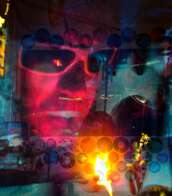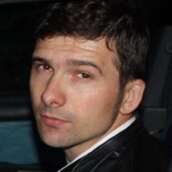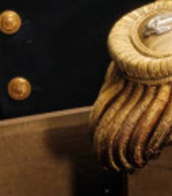casio

























Martin Kippenberger was a German artist known for his extremely prolific output in a wide range of styles and media, superfiction as well as his provocative, jocular and hard-drinking public persona.
Kippenberger was "widely regarded as one of the most talented German artists of his generation," according to Roberta Smith of the New York Times. He was at the center of a generation of German enfants terribles including Albert Oehlen, Markus Oehlen, Werner Büttner, Georg Herold, Dieter Göls, and Günther Förg.


Jürgen Klauke is a German artist. Beginning in the 1960s, he used his own body as a subject of his photographs. He also experimented with minimalism and surrealism. The ZKM in Karlsruhe exhibits his work. Since 1968 he lives and works in Cologne.


Stephan Kaluza is a multifaceted artist known for his work as a photographer, painter, and author. Living and working in Düsseldorf, Kaluza has developed a unique artistic voice that explores the intersections of natural philosophy, history, and the essence of human perception through both his visual art and literary works. His education in Düsseldorf during the 1990s, encompassing studies in photography, art history, and philosophy, has deeply influenced his creative output, allowing him to craft works that resonate on multiple levels with viewers and readers alike.
Stephan Kaluza's art often delves into themes of nature and creation, with his paintings ranging from hyperrealistic depictions to nearly abstract portrayals of forests and water surfaces. Notably, his work introduces disturbances into seemingly idyllic landscapes, revealing the layers of history and human impact hidden beneath the surface beauty of nature. This duality invites viewers to question the reality of what they see and to consider the deeper narratives that landscapes can hold, especially when those landscapes have served as backdrops to historical events or personal stories.
One of his most ambitious projects, the "Das Rheinprojekt," saw Stephan Kaluza undertaking an almost eight-month journey along the Rhine River. Documenting the river's right bank in over 21,000 photographs, he created a panoramic view that challenges traditional perspectives of landscape photography. This work, along with his "Das Mauerprojekt" and other photographic series, underscores Kaluza's commitment to capturing and conveying the complex relationship between humanity and the natural world.
Stephan Kaluza's contributions to the fields of art and literature have been recognized with awards such as the George-Konell-Preis of Wiesbaden and the Price of the Carl- und Ruth Lauterbach-Stiftung Dusseldorf. His works are held in both public and private collections worldwide, including the Portland Art Museum in Oregon, USA, and the Stadtmuseum Düsseldorf, Germany, highlighting his international appeal and the broad relevance of his themes.
For collectors and experts in art and antiques, Stephan Kaluza offers a profound engagement with the world through the lens of an artist deeply informed by a rich educational background and a keen sensitivity to the natural and cultural landscapes that shape our experiences. His work invites contemplation and dialogue, making his pieces valuable additions to any collection.
Stay updated on Stephan Kaluza's latest works, exhibitions, and publications by subscribing to newsletters from galleries and museums that feature his work. This subscription ensures access to new sales, auction events, and showcases related to Kaluza's evolving portfolio, offering insights into contemporary art and literature influenced by his unique perspective.


Thomas Ruff is a German photographer who lives and works in Düsseldorf, Germany. He has been described as «a master of edited and reimagined images».


Martin Kippenberger was a German artist known for his extremely prolific output in a wide range of styles and media, superfiction as well as his provocative, jocular and hard-drinking public persona.
Kippenberger was "widely regarded as one of the most talented German artists of his generation," according to Roberta Smith of the New York Times. He was at the center of a generation of German enfants terribles including Albert Oehlen, Markus Oehlen, Werner Büttner, Georg Herold, Dieter Göls, and Günther Förg.






























































